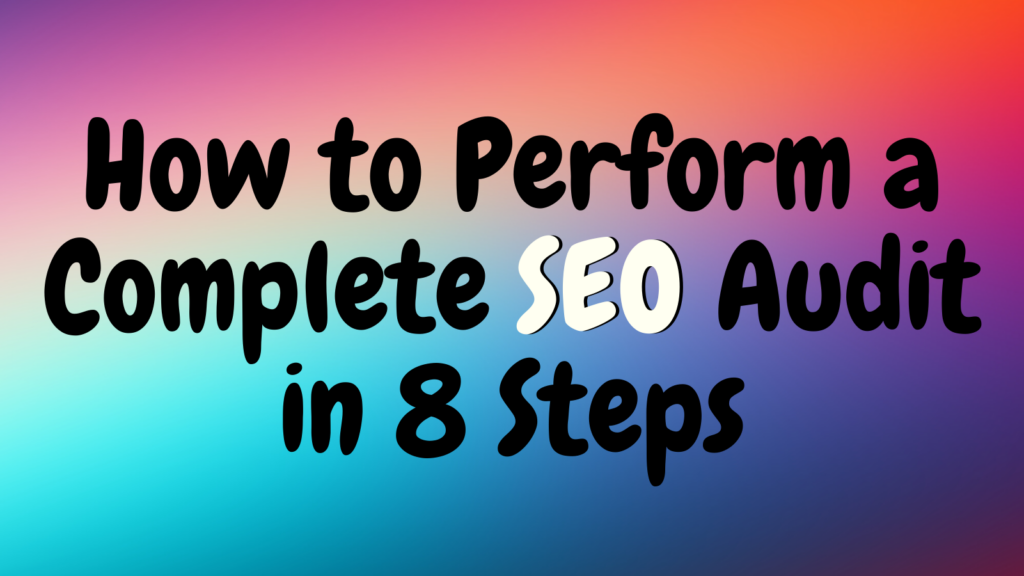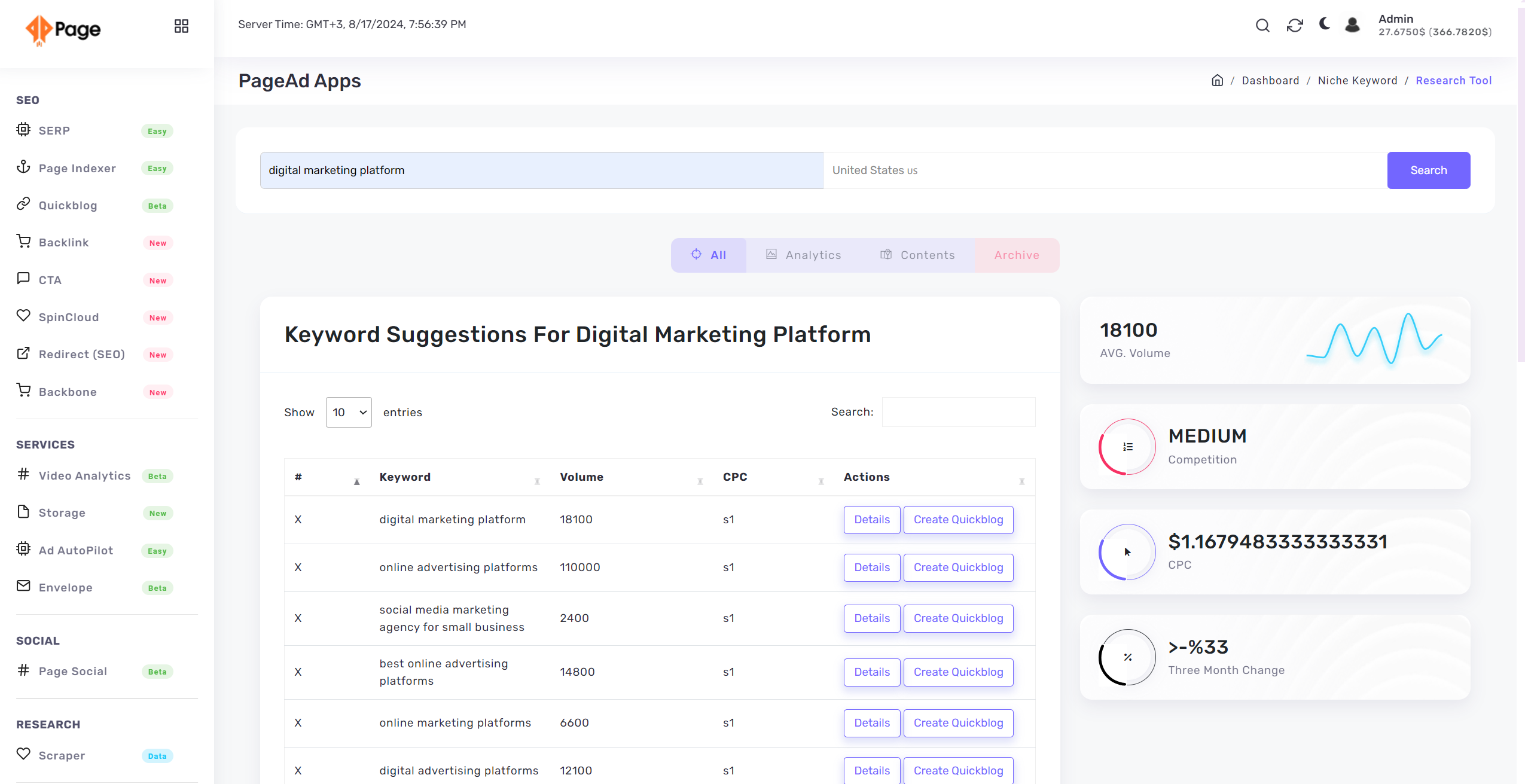What Is an SEO Audit?
This is what an SEO audit isAn **SEO Audit** refers to the process of the examination of a website in order to understand how well it adheres best practices for search engine optimization (polluted with acronyms here, sorry). This includes analysing the technical setup, content structure, backlinks and user experience of a website or webpage. Its aim is to find out problems which may be hurting the search engine rankings of the website and also provide us with insights that we can use to improve performance.
Why Do You Need an SEO Audit For?
An SEO audit completely checks the well being of your technical parameters and helps make it simpler for Google to crawl, index, and rank your website. If you dont conduct regular audits, you can miss issues that affect your site to appear in the rankings or optimization opportunities they increase the reach of their site on search results.
So here are a few reasons why you need an SEO audit:
1. Website Performance: Helps with issues such as broken links or slow load times that limit usability and drive visitors away.
2. Improve Search Engine Rankings: Can identify is your SEO needs to be better, like using keywords more wisely or have to write meta tags for search engines understand what your content about.
3. Competitors Analysis: it Comps- reveals other places on the web that are listed higher than you, letting you know what to work on before paying someone to fix your site.
4. Boosting ROI (Return on Investment): Your site gets more visibility in search engines that mean you have a bigger pool of organic traffic coming your way leading to’ higher conversion rates giving it a massive spike towards profitability.
SEO Audit Tools You Need
What are the key tools that you are going to work with while conducting an SEO Audit and how It is beneficial for you.
Page Keyword Research: A powerful tool to gain insights on your website SEO strength It runs checks on anything from your keyword rankings and backlinks to technical glitches like broken links or missing metadata.
Google Search Console: Google’s free tool that helps you monitor and maintain your site’s presence in Google search results. It tells you what pages are being indexed, performance data like clicks and impressions and warnings of manual actions that could damage your rankings.
In Detail: Below Are The Important Steps of SEO Audit
Let us walk you through every step of the SEO audit process, and explain technical terms as well as their relevance.
1. Run a Site Crawl
Site Crawl: This is the process where a tool, say from an search engine automatically browses every single page on your website, using it as Google would. It looks for issues like:
Broken links: Links pointing to pages that no longer exist or serve 404 errors
Duplicate content: This refers to the same content that appears in multiple places on your site, making it harder for search engines to determine which version of the page is more relevant.
Redirects URLs that redirect to another URL (akin to if a page was moved) Although some redirects (301’s) are acceptable, too many of them can lead to downfalls in SEO.
Through a site crawl, you can identify important errors that may be they are causing Google not to properly index your page. You will only rank your pages when fixing this problems.
2. Check Your Organic Traffic
Organic traffic: Traffic that finds your site using search engines but not by clicking on a paid ad.
A sharp downturn in organic traffic may indicate an SEO problem. This might be caused by:
Google Algorithm Updates: Updates released by Google that changes how websites are ranked
Penalties Google can penalize websites who are found in breach of policies, such as black-hat SEO tactics (buying backlinks or stuffing keywords)
With Google Search Console you can track traffic trends and see if your site is being penalized.
3. Check for Indexing Issues
Indexing means how search engines have stored your web pages in their database to display in search results. When a page is not indexed, it means that it will not be visible to the users in search results when they search with their relevant keywords.
Check for possible indexing issues within the Pages report in Google Search Console. Some issues resulting from indexing problems: If your most important website pages are not indexed it goes without saying that the search engines cannot rank these pages.
Canonicalization issues: Occur if there are several versions of the same content, and Google cannot tell which one to index.
Robots. txt blocking: a file on your site that tells search engine which pages they are not allowed to crawl
Resolving these issues ensure all your high-value pages are indexed and can potentially rank in search.
4. Duplicate versions of your site
Search engines can index a single document with different URLs, e.g. if your site has both “http://” and “https://”, or if your site has “www.” or the non-www versions are live. Search engines can get confused because they might think these are separate websites diluting your SEO value.
If you are sending users from one version of your website to another, be sure to use **301 redirects**, as these will also tell search engines which version they should rank. As an example, if you like `https://yoursite.com` then all traffic to `http://yoursite.com` or `http://www.yoursite.com` should be redirected there.
5. Analyze Mobile-Friendliness
In the world where more and more people uses mobile devices to surf the net Google also goes with the trend via **mobile-first indexing** — in a nuthsell: checks first what is available on your site in its mobile version when it comes for rankings.
Check how well your site ranks on mobile using tools like **Page Keyword Research** Look for issues like:
Non-responsive design — A responsive design is one that adjusts to fit different screen sizes, if your page doesn’t adjust then it can be difficult to use on mobile.
Error: Tap targets too close together – Buttons or links that are too small or close, causing you to touch the wrong place.
Resolving these problems can have an impact on not just your mobile SEO but user experience as a whole.
6. Analyze Site Speed
Site speed is how fast your web pages load. Site speed is a ranking factor of Google; that is to say websites which load slower cannot get for instance in the first position on search engine results as easily.
Tools like Google PageSpeed Insights or Page Keyword Research, can give you an idea of your site speed. Reasons for a slow site speed are the following:
Uncompressed images — larger image files that load slower
JavaScript and CSS: Unoptimized code which slows the page load.
Improving your site speed to enhance UX and possibly rank better.
7. Analyze Core Web Vitals
Core Web Vitals is a new set of performance metrics introduced by Google which aims at measuring user experience quality on your website. These include:
Largest Contentful Paint (LCP): The time it takes for the biggest element (image or video) to load on a page.
Interaction to Next Paint (INP) – This metric measures how quickly the browser reacts to user inputs, such as a click or tap.
Cumulative Layout Shift (CLS): Tracks how much the page shifts layout during loading, resulting in what is sometimes called content hopping.
You can conduct the analysis of Core Web Vitals on Google Search Console or Page Keyword Research, so that you can enhance its performance for a better quality user experience.
8. Analyze Internal Links
Internal links are links from one of your website’s pages to another, and they are crucial for your site structure since they let search engines understand it better and give you the chance to transfer to authority from one page to the other. You can review your internal links by doing **Page Keyword Research** and using it to start on fixing the following issues: broken internal links, orphaned pages . Committee for Melbourne reports that you will ensure more effective site crawling and spreading of the SEO value on your web pages by fixing this. Keyword Research lets you find out which search terms your target audience is active, and failure to use some of them may mean a loss of traffic. Page Keyword Research gives you a tool for a keyword gap analysis, and this one compares ILC’s keywords to those your competitors. You will notice where your competitors are ranking better and start including it in your text. Backlinks are an essential factor in how Google ranks your website since they drive the view that your content is authoritative or trustful. Thus, do backlink analysis to detect your backlink profile’s issues such as toxic, broken backlinks. You can utilize Google Search Console to disavow them and take chances with your backlinks by contacting the linking website and asking them to replace the broken link.
Review On-Page SEO
On-page SEO refers to optimizing individual pages of a website in order to rank higher and earn more relevant traffic. Key elements include:
Title tags: Clickable headline that comes up in search results. Set a custom and key word rich title tag for every single page
Meta descriptions: A short introduction of the page, appearing in search results. They all have to be epic, but also relevant.
Title/SEO Headers (H1, H2, etc.) – Headings that arrange content and for SEO purposes. They are useful to tell search engines about the layout and subjects dealt with on a page.
When you optimize these elements, your user experience and search visibility will benefit.
Knowledge of these important technical keywords and processes can help you perform a better SEO audit, resulting in a well-optimized website for search engines.





